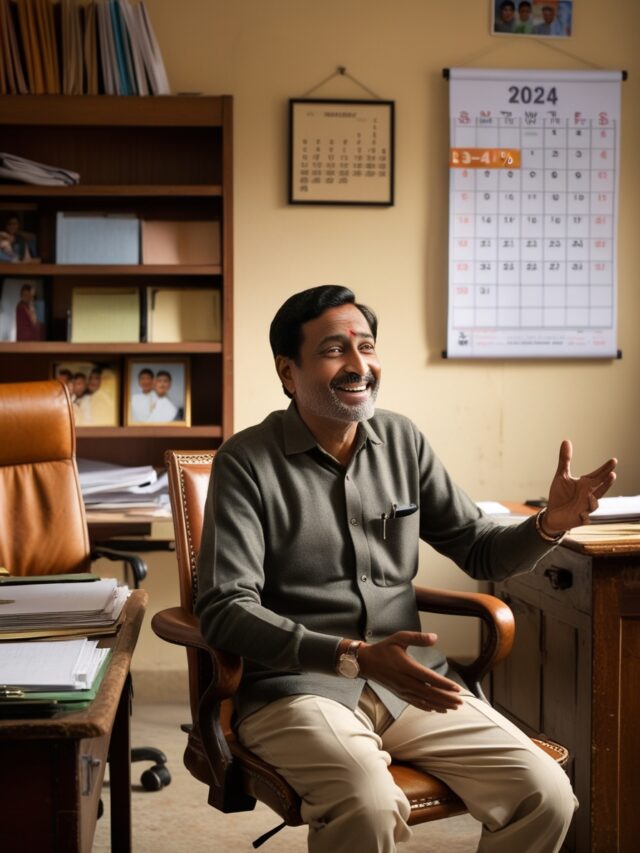
Released on January 11, 2024, the annual report by the International Labour Organization (ILO) paints a challenging picture for worldwide employment. As the world grapples with economic challenges, inflation, and stagnant wages, the ILO anticipates a rise in joblessness till 2024, despite some economies demonstrating resilience.
Macroeconomic Challenges:
The global economy faced a significant downturn in 2023 due to geopolitical tensions, central bank interest rate hikes, and ongoing crises. Several major economies experienced slowdowns, impacting industrial production, trade, and investment flows.
Uneven Job Market Recovery:
Despite global economic challenges, some countries witnessed unexpected jobs growth and reduced unemployment, surpassing predictions. The global jobless rate temporarily decreased to 5.1%, but concerns linger regarding the quality of available work.
Looming Risks:
The ILO warns of a potential increase in global unemployment in 2024 due to slowing economies and persistent structural issues in various nations. Working poverty, defined as surviving on less than $2 daily, is on the rise globally, with real wage growth lagging behind consumer prices in many G20 economies.
Indian Wage Growth Exception:
Notably, the report highlights positive real wage growth in India in 2022, outperforming all G20 countries except Mexico. Robust productivity expansion in India likely contributed to this growth, yet challenges in social equality and labor rights persist.
Long-Term Policy Recommendations:
- As the world moves into a complex new chapter, governments are urged to prioritize creating quality jobs and strengthening social safety nets to address rising inequality.
- Investments in workforce training, job matching programs, and unemployment schemes are crucial to navigate structural challenges driven by technology and climate change.
- Proactive reforms reinforcing worker protections can mitigate the anticipated rise in joblessness, laying the groundwork for an inclusive future of work.
International Labour Organization (ILO): A Brief Overview
Established post-World War I as a League of Nations agency, the International Labour Organization (ILO) has a rich history marked by significant milestones.
Foundation and Early Years:
- Founded in 1919 by the Treaty of Versailles, the ILO’s establishment reflected the progressive social thought and action of its founders.
- It attained the distinction of becoming the first specialized agency of the United Nations (UN) in 1946.
Historical Significance:
- During the Great Depression in the 1930s, the ILO played a crucial role in ensuring labor rights and stood as a beacon of support.
- It actively contributed to the decolonization process and played a role in the triumph over apartheid in South Africa.
- Acknowledging its efforts, the ILO was awarded the Nobel Peace Prize in 1969 for promoting peace, justice, and fair work.
ILO Objectives – Decent Work Agenda:
- The ILO stands as the sole tripartite U.N. agency, fostering collaboration between governments, workers, and employers of its member States.
- Core objectives under the Decent Work agenda include developing and implementing labor standards, ensuring equal access to decent work, expanding social protection, and strengthening tripartism and social dialogue.
Tripartite Structure of ILO:
International Labour Conference:
- An annual event in Geneva, Switzerland, where representatives convene to set progressive labor policies.
- Serves as a platform for reviewing crucial labor-related issues.
Governing Body:
- The executive body of the ILO, meeting three times annually in Geneva.
- Comprising 56 titular members and 66 deputy members, it decides on the agenda, policies, and adopts the draft Programme and Budget for the Organization.
International Labour Office:
- Acts as the permanent secretariat of the ILO, overseeing activities and accountable to the Governing Body and Director-General.
- Holds regional meetings to discuss pertinent issues, with each of the 183 Member States having the right to send four delegates, ensuring representation from government, workers, and employers.
- The tripartite principle forms the foundation of the ILO, embodying a commitment to collaboration, social justice, and the promotion of decent work globally.
International Labour Organization (ILO) – Fulfilling its Mandate
The International Labour Organization (ILO) actively engages in policy formulation and addresses various labor issues. Its multifaceted functions include:
1. Adoption and Implementation of Standards:
- ILO adopts international labor standards through conventions, overseeing their implementation globally.
- It supports member states in resolving social and labor challenges.
2. Protection of Human Rights:
- A staunch advocate for human rights, the ILO works towards ensuring their protection.
- Research and publication on social and labor issues contribute to informed decision-making.
3. Role of Trade Unions:
- Trade Unions play a vital role in shaping ILO policies, with the Bureau for Workers’ Activities dedicated to strengthening them.
- The ILO monitors the implementation of ratified conventions through various committees.
4. Complaints Mechanism:
- Member states report on convention implementation progress.
- The ILO registers complaints against violations without imposing sanctions.
5. International Labor Standards:
- ILO sets non-binding international labor standards, with member states making them legally binding upon acceptance.
- Conventions serve as a guide for aligning national laws with global standards.
6. Global Commission on the Future of Work:
- The ILO’s Global Commission on the Future of Work envisions a human-centered agenda, addressing challenges posed by technology, climate change, and demography.
- Mission and Declaration:
- ILO’s mission centers on promoting decent work through social dialogue, protection, and employment generation.
- The Declaration on Fundamental Principles and Rights at Work, adopted in 1998, mandates member states to uphold eight fundamental principles and rights.
Core Conventions:
- The eight core conventions, including those addressing forced labor, discrimination, and child labor, signify member states’ commitment to human rights.
- Relevant amid global economic challenges, these conventions are integral to the
Human Rights Framework.
The ILO’s commitment to fostering decent work and upholding fundamental principles reflects its dedication to social justice and labor rights worldwide.
India’s Association with the International Labour Organization (ILO)
India holds a significant position in the International Labour Organization (ILO) as a founding member, attaining permanent membership in the ILO Governing Body in 1922, and inaugurating its first ILO office in 1928.
ILO Ratifications and Exceptions:
India has ratified six fundamental conventions, showcasing commitment to ILO principles.
However, two conventions, Freedom of Association and Protection of the Right to Organise (No. 87) and Right to Organise and Collective Bargaining (No. 98), remain unratified due to conflicts with statutory rules for government employees.
Labour Movement Evolution in India:
The evolution of the labor movement in India unfolds through two distinct phases, offering insights into the challenges faced by workers:
1. Phase 1: 1850s – 1918
- Originating in the late 19th century, workers’ struggles gained momentum in the 1850s, revealing the harsh realities of their lives.
- Initial actions were sporadic and disorganized, with little impact.
- The second decade of the 20th century witnessed organized attempts in Bombay to form associations for more effective protests.
2. Phase 2: 1918 – Independence
This phase saw the transformation of sporadic protests into organized trade unions.
- The 1875 agitation in Bombay, led by S.S Bengalee, highlighted worker concerns, leading to the appointment of the first Factory Commission and subsequent legislation.
- The formation of the Bombay Mill Hands Association in 1890 marked the establishment of the first organized labor union in India.
- The 1920s saw significant efforts by Congress and Communists to mobilize the working class and establish an all-India organization.
Features of the Labor Movements:
- Leadership in this era was provided by social reformers rather than the workers themselves.
- Movements focused on worker welfare more than asserting their rights.
- While organized, there was no pan-India presence, and a clear intellectual foundation or agenda was lacking.
- Demands revolved around issues such as the welfare of women and child workers.
- India’s labor movement history is characterized by evolving struggles, shaping the path toward worker rights and welfare.







